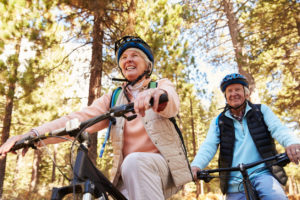
Exercise for brain and body health.
So far, no drug or therapy exists that matches the powerful effect regular physical exercise has on improving brain function or preventing Alzheimer’s disease.
In a study of senior citizens by the Mayo Clinic, exercise five to six times a week reduces the risk of mild cognitive impairment by 32 percent, as compared to other senior citizens who are not getting up and moving. Another Mayo Clinic study showed that for people with memory impairment, exercise improved memory about the same amount as the benefit of taking donepezil (Aircept), which does give some modest and temporary help to those struggling with memory loss.
How does exercise help?
Exercise both directly and indirectly helps our brain while helping our bodies. It reduces insulin resistance, reduces inflammation and stimulates the release of chemicals that affect the health of brain cells, the growth of new blood vessels in the brain and the amount and survival of brain cells. This is important because when small arteries in the brain are blocked as we age this causes mini-strokes so slight they are not noticeable. These blocked arteries add up to dead patches in the brain, called leukoaraiosis. Exercising helps to prevent these blockages from occurring by keeping the blood flow paths clear.
Indirect benefits of working out include improved mood and sleep, and a reduction in stress and anxiety. All issues typically cited in cognitive impairment.
What kind of exercise gets the best results?
Many studies, like one from the University of British Columbia, find that regular aerobic exercise is the best. Essentially, your heart rate should be elevated and you should be sweating. Resistance training, muscle toning and balance exercises did not achieve the same results in brain improvement. Brisk walking, running, dancing, tennis or even walking up and down stairs are great activities to include in your exercise routine. Household activities that get the blood pumping help, too—laying mulch, vigorous vacuuming or scrubbing a tub.
Remember, you don’t need to work out alone! Find a partner, join a class, or locate a hiking or bicycling club. Make exercising part of your regular routine and a social outlet for greater success.





